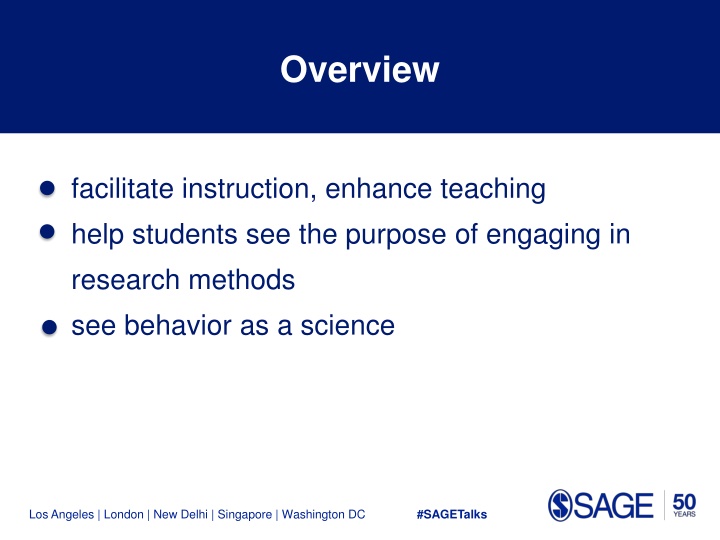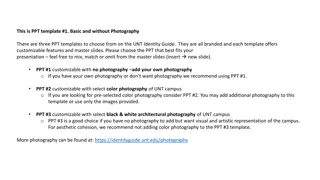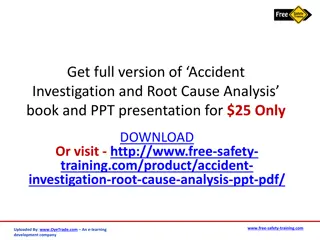
Understanding Research Methods in Behavioral Science
Explore the importance of research methods in understanding behavior as a science and learn how variability, error, and individual differences play a crucial role in enhancing instruction. Discover key concepts such as finding common ground, significance, and validity in research practices.
Download Presentation

Please find below an Image/Link to download the presentation.
The content on the website is provided AS IS for your information and personal use only. It may not be sold, licensed, or shared on other websites without obtaining consent from the author. If you encounter any issues during the download, it is possible that the publisher has removed the file from their server.
You are allowed to download the files provided on this website for personal or commercial use, subject to the condition that they are used lawfully. All files are the property of their respective owners.
The content on the website is provided AS IS for your information and personal use only. It may not be sold, licensed, or shared on other websites without obtaining consent from the author.
E N D
Presentation Transcript
Overview facilitate instruction, enhance teaching help students see the purpose of engaging in research methods see behavior as a science #SAGETalks Los Angeles | London | New Delhi | Singapore | Washington DC
Research Methods: An important part of science Think about the bigger picture Understanding behavior as a science requires both parts (Methods and Stats/Analysis) Finding common ground can facilitate instruction Methods Rules Analysis Data SCIENCE Decisions #SAGETalks Los Angeles | London | New Delhi | Singapore | Washington DC
If the balloons popped the sound wouldnt be able to carry since then everything would be too far away from the correct floor. A closed window would also prevent the sound from carrying, since most buildings tend to be well insulated. Since the whole operation depends on the steady flow of electricity, a break in the middle of the wire would also cause problems. Of course, the fellow could shout, but the human voice is not loud enough to carry that far. An additional problem is that the string could break on the instrument. Then there would be no accompaniment to the message. It is clear that the best situation would involve less distance. Then there would be fewer problems. With face-to-face contact, the least number of things could go wrong. Bransford and Johnson (1972) Los Angeles | London | New Delhi | Singapore | Washington DC
Finding Common Ground Degrees of freedom Counterbalancing Control, causality Operational definition Significance Variability, error Individual differences Constructs ANOVA Validity, reliability Sampling Methods Hypothesis development Statistics Power, effect size Normal distribution Scales of measurement Skewness Sample size Research ethics Methodology Parametric Los Angeles | London | New Delhi | Singapore | Washington DC
Enhancing Instruction: Bringing each part together Variability, error, and individual differences Cause and effect, and control Los Angeles | London | New Delhi | Singapore | Washington DC
Variability, Error, and Individual Differences Los Angeles | London | New Delhi | Singapore | Washington DC
Cause-and-Effect, and Control Los Angeles | London | New Delhi | Singapore | Washington DC
Closing the Loop in Experimentation Statistical Control Methodological Control Los Angeles | London | New Delhi | Singapore | Washington DC
Bringing Science into Focus Finding the common ground in methods and statistics can help students understand: why they are working through the process of engaging in research methods, and how research methods fits with the bigger picture of engaging in science. Los Angeles | London | New Delhi | Singapore | Washington DC






















